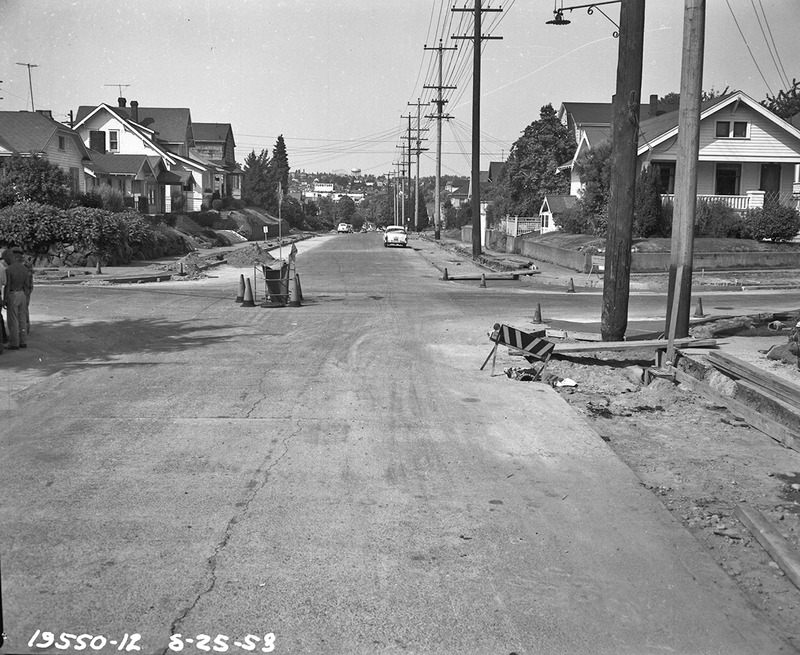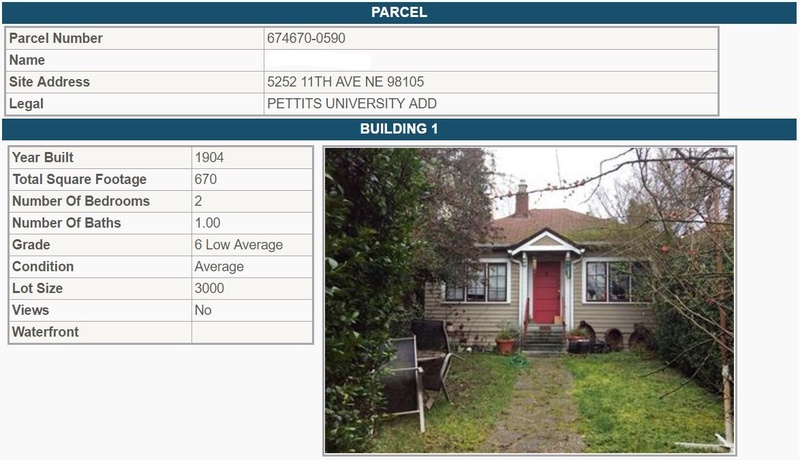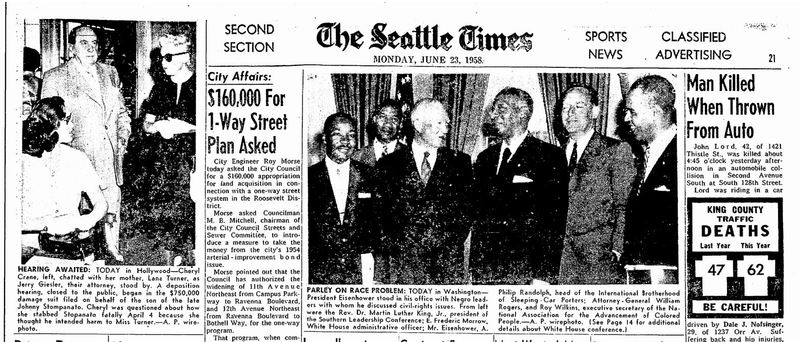Site Report #3: The Audio Tour

Picture of construction during the widening of 11th Ave NE. Taken on 08-25-1958. Seattle Municipal Archives Photograph Collection.

Snippet from King County Department of Assessments website giving details on the oldest standing house on block 71. 02-13-2017.
Audio Tour Script
One can learn a lot about the history of the land we live on through historical research. Some of the earliest information on the land of Seattle’s University District is recorded in topographical maps and firsthand accounts of the land by prospectors. These early surveys of the land indicate that the University District was discovered as a densely-forested area, with a slight slope the from north going downhill to what is now Portage Bay. Block 71 sits on a particularly hilly piece of land, with a steep slope from east to west. 11th Ave NE indicates the bottom of the hill with 12th Ave NE indicating the top. This hill likely bears much resemblance to what it originally looked like, minus the houses. The first alterations to this block were likely the removal of trees between 1895-1900, after the University had moved to University District, causing an increase in development. Early maps show this block platted as residential, as it remains today. Per the King County Department of Assessments, the oldest house on this block was built in 1904, and over half of those that remain today were built between 1900 and 1910. As the University District grew, residential development changed. This block is a great example of that change over time. The oldest single family homes are easy to spot. Then came along the tall multi-family homes in the 50s and 60s to house more people including university students. The newest additions to the block are the apartment complexes that make their presence known through different architectural style. It’s an almost perfect example of Seattle residential development over time.
The largest change that this block experienced was the widening of 11th Ave NE in 1958-1959. The street was widened to accommodate more traffic as the University District population increased and 11th Ave NE became a popular route used to get to Ravenna and to Roosevelt High School. The effects of the widening are still evident today as the sidewalk along 11th Ave NE remains tiny compared to that along 12th Ave, on the other side of the block. That is the story of block 71, a great example of residential development in response to the economic and social growth of a neighborhood.
Audio Recording
https://drive.google.com/file/d/0B1_Y3XXLQn_fRXM1MXd6TlhUNmM/view?usp=sharing

Article from The Seattle Times about proposal of the 11th Ave NE widening. Article published on Monday, June 23rd, 1958. Accessed through Readex website.

